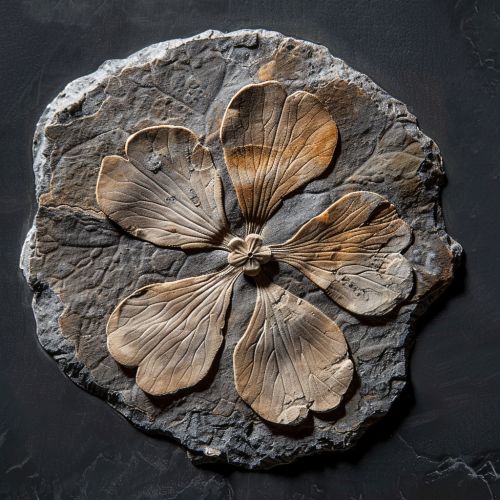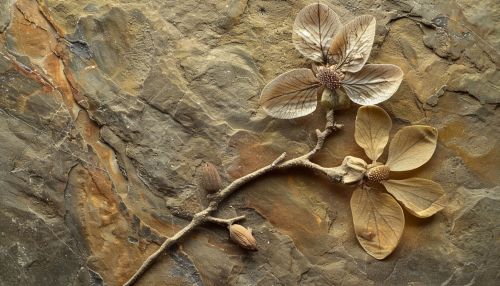Evolution of flowers
Introduction
The evolution of flowers, also known as angiosperms, is a significant event in the history of plant life on Earth. This process has led to the vast diversity of flowering plants that we see today, which play a crucial role in ecosystems and human agriculture. This article delves into the intricate details of the evolutionary history, mechanisms, and significance of flowers.
Origin of Flowers
The origin of flowers dates back to the early Cretaceous period, approximately 140 million years ago. The earliest known angiosperm fossils, such as Archaefructus liaoningensis, provide evidence of primitive flowering plants. These early angiosperms exhibited simple floral structures, which gradually evolved into the complex forms we see today.
Fossil Evidence
Fossil records are crucial in understanding the evolution of flowers. The discovery of Archaefructus and other early angiosperms in the Yixian Formation of China has provided significant insights. These fossils show a combination of primitive and derived traits, indicating a transitional phase in flower evolution.


Evolutionary Mechanisms
The evolution of flowers is driven by several mechanisms, including genetic mutations, natural selection, and coevolution with pollinators. These mechanisms have led to the diversification of floral structures and reproductive strategies.
Genetic Mutations
Genetic mutations play a fundamental role in the evolution of flowers. Mutations in key regulatory genes, such as the MADS-box genes, have led to variations in floral organ identity and arrangement. These genetic changes have been crucial in the development of diverse floral forms.
Natural Selection
Natural selection has shaped the evolution of flowers by favoring traits that enhance reproductive success. Traits such as flower color, shape, and scent have evolved to attract specific pollinators, thereby increasing the chances of successful pollination and seed production.
Coevolution with Pollinators
Coevolution with pollinators has been a significant driving force in the evolution of flowers. The mutualistic relationship between flowers and their pollinators, such as bees, birds, and bats, has led to the development of specialized floral traits. For example, the orchid family exhibits a wide range of floral adaptations to attract specific pollinators.
Diversification of Floral Structures
The diversification of floral structures is a hallmark of angiosperm evolution. This section explores the various floral forms and their evolutionary significance.
Floral Symmetry
Floral symmetry is a key aspect of flower morphology. Flowers can be classified as actinomorphic (radially symmetrical) or zygomorphic (bilaterally symmetrical). The evolution of zygomorphic flowers is often associated with specialized pollination strategies, as seen in the legume family.
Floral Organs
The arrangement and number of floral organs, such as sepals, petals, stamens, and carpels, have diversified significantly. The rose family exhibits a wide range of floral organ arrangements, from simple to highly complex structures.
Inflorescence Types
Inflorescence, the arrangement of flowers on a plant, has also evolved in various ways. The aster family is known for its composite inflorescences, where multiple small flowers form a single flower-like structure, enhancing pollinator attraction.
Ecological and Evolutionary Significance
The evolution of flowers has profound ecological and evolutionary implications. This section discusses the role of flowers in ecosystems and their impact on plant diversity.
Role in Ecosystems
Flowers play a crucial role in ecosystems by facilitating pollination and seed dispersal. They provide food resources for a wide range of pollinators, contributing to the stability and health of ecosystems. The grass family, for example, supports numerous herbivores and pollinators.
Impact on Plant Diversity
The evolution of flowers has led to the remarkable diversity of angiosperms, which constitute the majority of plant species on Earth. This diversity is evident in the wide range of habitats and ecological niches occupied by flowering plants, from tropical rainforests to arid deserts.
Molecular Evolution of Flowers
Advances in molecular biology have provided deeper insights into the evolution of flowers. This section explores the genetic and molecular mechanisms underlying floral development.
Genetic Pathways
The genetic pathways involved in floral development are highly conserved across angiosperms. The ABC model of flower development describes how the interaction of three classes of genes (A, B, and C) determines the identity of floral organs. Mutations in these genes can lead to variations in flower morphology.
Evolution of Floral Genes
The evolution of floral genes, such as the MADS-box gene family, has played a pivotal role in the diversification of floral structures. Comparative genomics studies have revealed how gene duplications and subsequent functional divergence have contributed to the evolution of novel floral traits.
Paleobotanical Insights
Paleobotany, the study of ancient plants, has provided valuable information on the evolution of flowers. Fossilized flowers and pollen grains offer a glimpse into the early stages of angiosperm evolution.
Early Angiosperm Fossils
Early angiosperm fossils, such as Montsechia vidalii, provide evidence of the primitive characteristics of flowering plants. These fossils exhibit simple floral structures, suggesting that early angiosperms were small, herbaceous plants.
Pollen Fossils
Pollen fossils are another important source of information. The morphology of fossilized pollen grains can reveal details about the reproductive strategies and evolutionary relationships of ancient flowering plants. The tricolpate pollen type is characteristic of many early angiosperms.
Evolutionary Trends in Flowering Plants
Several evolutionary trends can be observed in the history of flowering plants. This section highlights some of the major trends that have shaped the diversity of flowers.
Reduction in Floral Parts
One notable trend is the reduction in the number of floral parts. Many modern angiosperms, such as those in the order Poales, exhibit simplified floral structures with fewer sepals, petals, stamens, and carpels. This reduction is often associated with specialized pollination mechanisms.
Fusion of Floral Organs
The fusion of floral organs is another common trend. For example, the nightshade family exhibits fused petals forming a tubular corolla, which enhances pollinator specificity. The fusion of carpels to form a compound ovary is also a significant evolutionary development.
Evolution of Floral Scent
The evolution of floral scent has played a crucial role in attracting pollinators. Volatile organic compounds produced by flowers serve as olfactory cues for pollinators. The magnolia family is known for its fragrant flowers, which attract beetles and other pollinators.
Adaptive Radiation of Angiosperms
The adaptive radiation of angiosperms has led to the colonization of diverse habitats and the evolution of various life forms. This section explores the factors contributing to the success of flowering plants.
Ecological Niches
Angiosperms have adapted to a wide range of ecological niches, from aquatic environments to alpine regions. The water lily family is an example of angiosperms adapted to aquatic habitats, exhibiting specialized floating leaves and flowers.
Evolution of Herbaceous Forms
The evolution of herbaceous forms has allowed angiosperms to occupy disturbed habitats and complete their life cycles rapidly. The mustard family includes many herbaceous species that thrive in open, disturbed environments.
Woodiness and Secondary Growth
Woodiness and secondary growth have enabled angiosperms to develop large, long-lived trees and shrubs. The oak family includes many woody species with extensive secondary growth, allowing them to dominate forest ecosystems.
Conclusion
The evolution of flowers is a complex and multifaceted process that has profoundly influenced the diversity and success of angiosperms. Through genetic mutations, natural selection, and coevolution with pollinators, flowering plants have developed a wide range of floral structures and reproductive strategies. The study of fossil records, molecular biology, and paleobotany continues to provide valuable insights into the evolutionary history of flowers.
